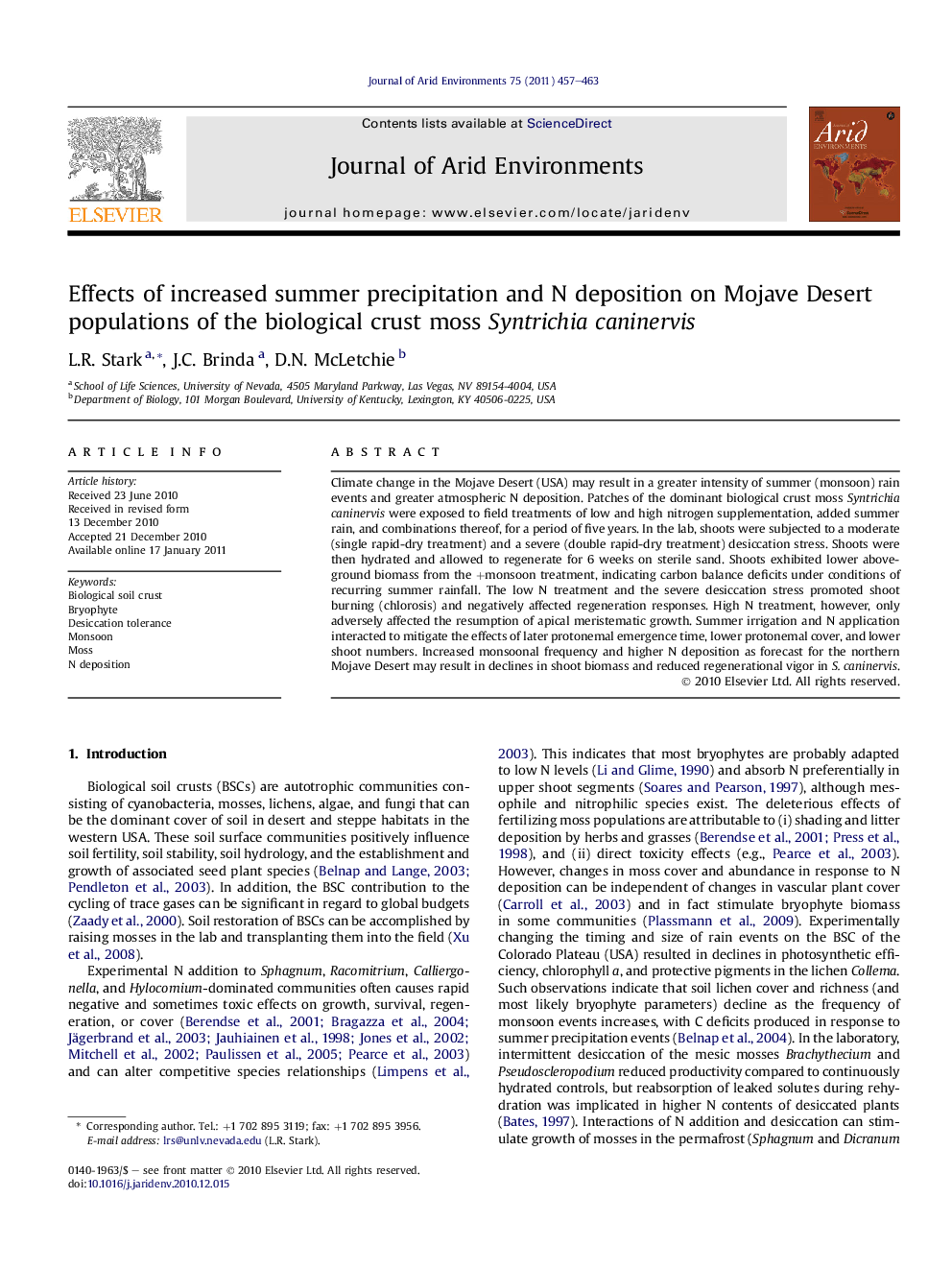| Article ID | Journal | Published Year | Pages | File Type |
|---|---|---|---|---|
| 4393760 | Journal of Arid Environments | 2011 | 7 Pages |
Climate change in the Mojave Desert (USA) may result in a greater intensity of summer (monsoon) rain events and greater atmospheric N deposition. Patches of the dominant biological crust moss Syntrichia caninervis were exposed to field treatments of low and high nitrogen supplementation, added summer rain, and combinations thereof, for a period of five years. In the lab, shoots were subjected to a moderate (single rapid-dry treatment) and a severe (double rapid-dry treatment) desiccation stress. Shoots were then hydrated and allowed to regenerate for 6 weeks on sterile sand. Shoots exhibited lower aboveground biomass from the +monsoon treatment, indicating carbon balance deficits under conditions of recurring summer rainfall. The low N treatment and the severe desiccation stress promoted shoot burning (chlorosis) and negatively affected regeneration responses. High N treatment, however, only adversely affected the resumption of apical meristematic growth. Summer irrigation and N application interacted to mitigate the effects of later protonemal emergence time, lower protonemal cover, and lower shoot numbers. Increased monsoonal frequency and higher N deposition as forecast for the northern Mojave Desert may result in declines in shoot biomass and reduced regenerational vigor in S. caninervis.
Research highlights► An added precipitation treatment resulted in lower shoot biomass of Syntrichia caninervis. ► A low N treatment negatively affected shoot regeneration in S. caninervis. ► A high N treatment adversely affected the resumption of apical growth in S. caninervis. ► Desiccation stressed shoots of S. caninervis regenerated more slowly, produced lower protonemal cover, and produced fewer shoots than unstressed controls.
